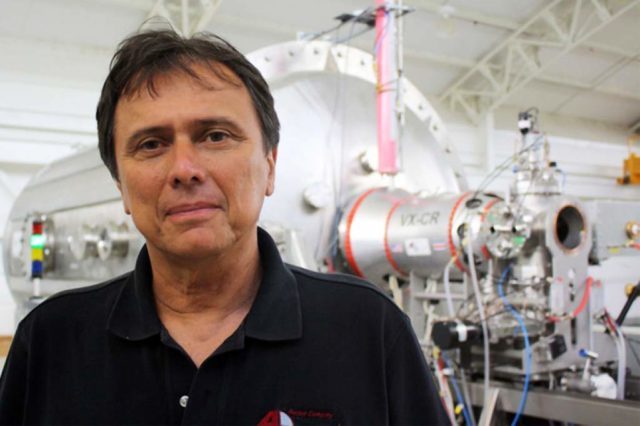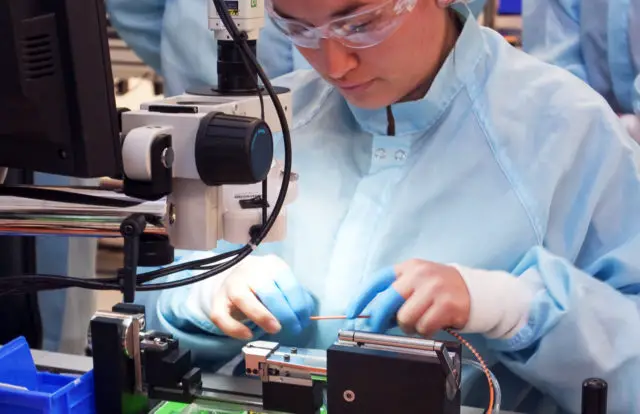With less than 5 million inhabitants, it has not prevented Costa Rica from being at the forefront of innovation in Latin America. Well-known as coffee and banana exporters, Costa Ricans evolved towards the manufacture of microchips in the 1990s, and then towards the export of advanced services and technology, taking advantage of the talent of an educated and bilingual population.
But that is only one of the many reasons that have allowed the bcountry to follow a very different path from that of neighbors such as Nicaragua, El Salvador, or Honduras.
“The fact that companies like Microsoft, Intel, Hewlet-Packard, Google, Amazon are in Costa Rica is thanks to the high educational level of the population, in addition to social and political stability”, says Pedro Beirute, general manager of the Foreign Trade Promoter from Costa Rica (Procomer).
Is Costa Rica so ‘Pura Vida’?
The Central American country has also favored its geographical location and good connectivity with the rest of the Latin American and the United States economies. And these advantages, together with a commercial opening that began 3 decades ago, has made it a magnet for large technological multinationals and in the most innovative country in Latin America after Chile, according to the Global Innovation Index 2019.
Of course, not everything is perfect; this rapid economic transformation has occurred in a country that still has 20% poverty and 12% unemployment. And to its problems of infrastructure and bureaucracy, there is a galloping fiscal deficit of 6% of the Gross Domestic Product (GDP), which has put the government of Carlos Alvarado to cut public spending and collect more taxes through tax reform.
In the midst of these challenges, however, the country continues to embark on its plan to attract more foreign direct investment, encourage the creation of new technology companies and export value-added products.
A rocket to Mars in 39 days
One of the symbols of Costa Rican innovation is the Ad Astra Rocket laboratory in Costa Rica, scientist Franklin Chang, one of the first Latin American astronauts who traveled to space. In addition to creating hydrogen technologies to reduce transport pollution, one of Chang’s star projects is a revolutionary invention to take a rocket to Mars in 39 days, using a plasma engine.

And also Costa Ricans are proud to have put in space the first Central American satellite in 2018, developed by scientists from the Tecnológico de Costa Rica (TEC). With the goal of ‘decarbonizing’ its economy by 2050 -which means eliminating the use of fossil fuels- the country has also opted for biotechnology to develop renewable energy.
The revolutionary plan of the first country in Latin America that wants to ban oil use
And their scientists are working on innovations to realize the dream of becoming a ‘green country’. “We have the talent; we just need more companies”, says Cindy Torres, a professor at the University of Costa Rica, dedicated to research in sustainable development.
For now, Costa Rica has been the scene of multiple inventions, such as the only humanoid robot in Latin America that has soft control hands for handling tasks.
And although many of the innovations are focused on computer development to improve the efficiency of companies, the list of inventions is long. Some of them are:
- Treatments against pancreatic, liver, and ovarian cancer
- Blood products (medicines made from human blood)
- Insect-based foods, such as cookies, milkshakes, and cricket bars.
- Teeth created from the bones of cows and other dental biomaterials.
- Software development to improve the country’s electrical systems or to digitally manage information systems in hospitals.
- Genetic improvement of species.
- Anti-oily serum to survive a snake bite.
- Digital applications for companies and the development of artificial intelligence.
- Electricity and heat generation from coffee waste.
And although they are less visible, Costa Rica has advanced in the development of systems that make more efficient the processes of production of the companies (Business Process Organization, BPO).
A small experimental laboratory
Since the late 1990s, the country has taken decisive action for foreign companies to settle in their free zones. This is how the American Intel, the world’s largest microprocessor producer, opened a factory that became responsible for 20% of national exports in the late 1990s until in 2014 it closed to transfer it to Asia, where the costs of Production are cheaper.
Gone, however, left a research laboratory that employs highly skilled labor known as the Intel Megalab. “They took the production line, but left the added value to export knowledge”, Beirute points out.
Like Intel, there are about 100 companies dedicated to generating products derived from the so-called ‘life sciences’, with applications in medical technology, agriculture, food or the pharmaceutical industry.

In fact, one of the symbols of successful Costa Rican startups is Establishment Labs, the first Costa Rican company that trades its shares in the Nasdaq. Its focus is the export of medical devices such as breast implants that incorporate a chip inside and are sold in about 70 countries.
And that is precisely one of the great bets of Costa Rica: the export of medical devices such as heart valves, instruments for examinations and other products used in hospitals.
Despite recent developments, the history of innovation began many years ago. “We have innovated since the army was abolished 71 years ago and those resources were invested in education”, Luis Jiménez, director of the University Agency for Entrepreneurship Management, of the University of Costa Rica, tells BBC Mundo.
Jiménez says that the country has one of the 3 largest medical equipment development centers in the world and highlights how the public sector, through universities, has led the investment in technological innovation. “Costa Rica is a small laboratory for the rest of the world”, says Jiménez.
Diversified economy
Costa Rica has been expanding its commercial opening for decades (it has signed about 50 free trade agreements), invests 8% of GDP in education and, since it does not spend resources on the Armed Forces, it has more money to invest in research and development.
Their exports represent about 35% of GDP, a level that leaves them in a very good position compared to other developed countries.
The travel industry (tourism, education, and health) occupies the first place in foreign sales, followed by business services and products in the field of information technology and telecommunications, according to Procomer data.
And if all the products of medical devices are grouped, the sector as a whole exceeds the export of pineapple and electronic components, with 28% of the total exported from the country.
Innovation in the midst of poverty
“Innovation has given us a comparative advantage over other countries and, although we do not have a channel like Panama, we have managed to take off”, says Costa Rican journalist Esteban Mata. However, he warns that poverty remains alarming and that there is a setback in the economic situation that may have an impact on innovative advances.
To the partial cut in the financing of university credits, other social problems are added like the increase of the violent deaths, a phenomenon that also plays against the development of new businesses. “Costa Rica is sold as a paradise but it is not, actually”, Mata adds.
Tech giants and small businesses
Some of the large foreign companies have established their Latin American headquarters in Costa Rica, while others have carried out operations in the country such as customer service, accounting, finance, technology support, and human resources management.
“Many are technological multinationals that work in free zones, have high productivity and pay their employees very well”, says Galileo Solís, Senior Competitiveness, Technology, and Innovation Specialist at the Inter-American Development Bank (IDB).
But as if it were a parallel reality, 95% of Costa Rican companies live in another world. “Most of them are small or medium-sized local businesses with low productivity”, he explains. It is a divided country: an innovative and thriving Costa Rica; and another Costa Rica, rather lagging behind.
“Although its economy grows reasonably well, there is a lot of inequality and poorly paid jobs at the pyramid’s base”, adds Solis. “It is an innovative country that has great social challenges”, he concludes.


